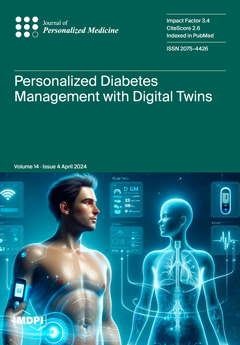Menopausal status affects the prognoses and consequences of breast cancer. Therefore, this retrospective study aimed to reveal the molecular variation profile differences in breast cancer patients according to their menopausal status, with the hypothesis that the molecular variation profiles will be different at premenopausal and postmenopausal ages. Breast cancer patients (
n = 254) who underwent molecular subtyping and QIAseq Human Breast Cancer NGS Panel screening between 2018 and 2022 were evaluated retrospectively. Their menopausal status was defined by age, and those aged 50 years and above were considered postmenopausal. Of the subjects, 58.66% (
n = 149) were premenopausal and 41.34% (
n = 105) were postmenopausal. The mean age at the time of diagnosis for all patients was 49.31 ± 11.19 years, with respective values of 42.11 ± 5.51 and 59.54 ± 9.01 years for the premenopausal and postmenopausal groups, respectively (
p = 0.000). Among premenopausal patients, the percentages of patients in BCa subtypes (luminal A, luminal B-HER2(−), luminal B-HER2(+), HER2 positive, and triple-negative) were determined to be 34.90%, 8.05%, 26.17%, 10.74%, and 20.13%, respectively, while in the postmenopausal group, these values were 39.05%, 16.19%, 24.76%, 6.67%, and 13.33%, respectively (
p > 0.05). Considering menopausal status, the distribution of hormone receptors in premenopausal patients was ER(+)/PgR(+) 63.76%, ER(−)/PgR(−) 23.49%, ER(+)/PgR(−) 10.74%, and ER(−)/PgR(+) 2.01%, respectively, while in postmenopausal women, this distribution was observed to be 74.29%, 23.81%, 1.90% and 0.00% in the same order (
p = 0.008). The most frequently mutated gene was
TP53 in 130 patients (51.18%), followed by
PIK3CA in 85 patients (33.46%),
BRCA2 and
NF1 in 56 patients (22.05%),
PTEN in 54 patients (21.26%), and
ATR and
CHEK2 in 53 patients (20.87%).
TP53, PIK3CA, NF1, BRCA2, PTEN, and
CHEK2 mutations were more frequently observed in premenopausal patients, while
TP53, PIK3CA, BRCA2, BRCA1, and
ATR mutations in postmenopausal patients. These findings contribute to a deeper understanding of the underlying causes of breast cancer with respect to menopausal status. This study is the first from Turkey that reflects the molecular subtyping and somatic mutation profiles of breast cancer patients according to menopausal status.
Full article





